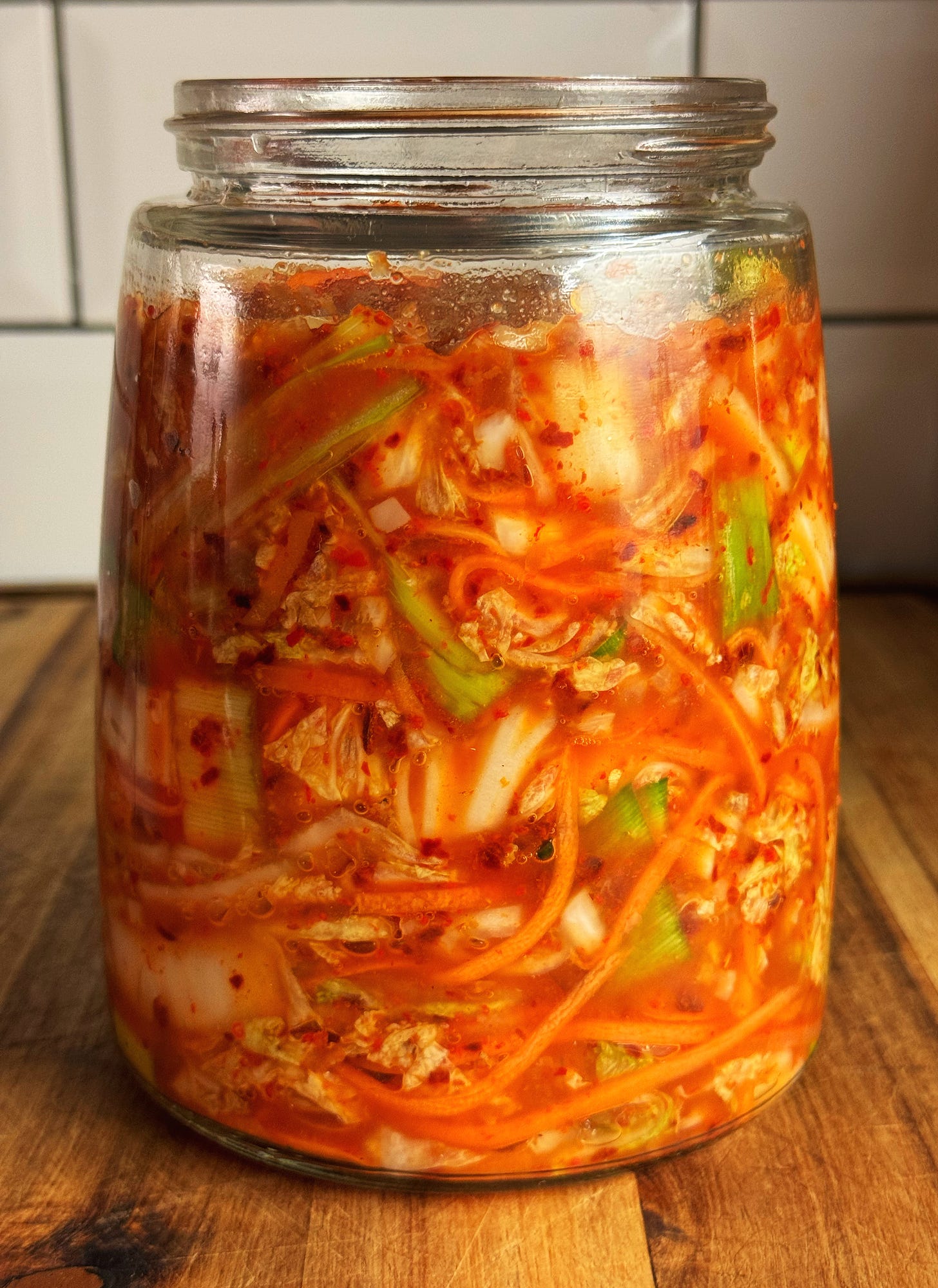Korean Kimchi (김치)
The real-deal lacto-ferment. Making kimchi at home offers tonnes of micro-biotic health benefits which no store-bought version can deliver - plus, it couldn't be easier to make for a total beginner.
Kimchi (김치) dates back thousands of years and forms a crucial part of Korean, and as well as Chinese and Japanese, cuisine. This method of fermentation was harnessed as a means to preserve vegetables outside of their season. The reason why Korea in particular does kimchi so well is due to an impoverished past, during which many Koreans had to adapt to bountiful summers and harsh, bleak winters with limited produce. The process of lacto-fermentation makes food last longer, but it also transforms bland produce into exciting flavours and aromas, unlocking more nutritional benefits. I won’t go into the benefits of probiotic foods, but simply put: more is more. My main interest really, to be honest with you, is flavour. Kimchi is incredibly delicious and is great in many dishes where heat, umami, sourness or crunch feel right at home. And it goes great with a Korean ‘bulgogi’ meat grill [GET THE RECIPE]. Nothing tastes anywhere as good as the kimchi you make yourself. This little project will take you 5 days - it’s very hands-off - and I’ll explain what is happening at each step so you have total peace of mind through the process. By the end, you’ll have a fermented kimchi that you can store in the fridge for a very long time, and a basic lacto-fermentation understanding to apply to other produce for evermore. Oh yes - you can make kimchi out of lots of other things; coriander, cucumbers, radishes. It’s a lot of fun. Delicious, smelly fun. Let’s go!


